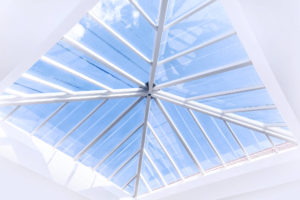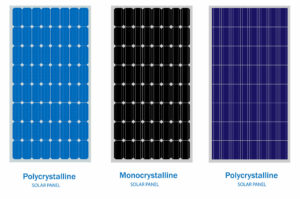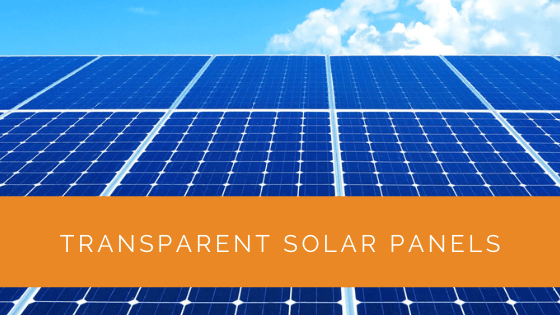Are you on the lookout for a sustainable and stylish energy solution for your home or business? Look no further than transparent solar panels, the newest offering from the world of Building-Integrated Photovoltaics (BIPVs). These panels offer a unique alternative to traditional solar panels, with their sleek and subtle design blending seamlessly into buildings. Not only do they generate energy, but they also enhance the aesthetic appeal of any structure. While fully transparent panels are still a work in progress, partially transparent variants have already made their mark, striking a perfect balance between efficiency and elegance.
In this comprehensive guide, we will explore the intricacies of transparent solar panels, their advantages and drawbacks, and their potential as a sustainable energy solution. We will delve into their efficiency, cost, and the pros and cons of their installation, empowering you to make an informed decision about integrating them into your building. In addition to transparent solar panels, we will also explore other innovative solar panel options such as bifacial panels, concentrated PV cells, and solar tiles. By the end of this guide, you will have a thorough understanding of the boundless possibilities that transparent solar panels offer in the world of sustainable energy. Join us now on this enlightening journey into the future of solar power.
Contents
- 1 Key Takeaways
- 2 Working on Solar Panels
- 3 Transparent Solar Panels
- 4 Efficiency
- 5 Cost
- 6 Pros and Cons
- 7 Prerequisites
- 8 Other Types of Solar Panels
- 9 Case Study: The Innovative Use of Transparent Solar Panels in a Commercial Building
- 10 Expert Insights From Our Solar Panel Installers About Transparent Solar Panels
- 11 Discover the Power of Solar with Solar Panels Network
- 12 Summing It Up
Key Takeaways
- Transparent solar panels, made from Building-Integrated Photovoltaics (BIPVs), offer a sleek and stylish alternative to traditional opaque panels, with a 30-40% transparency range.
- Partially transparent solar panels, created using thin-film photovoltaics (TPVs), have an efficiency of about 7-10%, while fully transparent panels using a transparent luminescent solar concentrator (TLSC) achieve over 85% transparency but have an efficiency of not over 1%.
- Although transparent solar panels may have lower individual efficiency, they can be used to replace windows and offer potential cost savings in the long run, with expectations of a 50% reduction in installation costs compared to standard panels in the coming years.
Working on Solar Panels
Before dwelling on the nuances of transparent solar panels, it is imperative to understand the principles behind their work.
A solar system has numerous elements that are of prime importance. Each panel of solar cells is connected in a series / parallel combination, which is then connected to an inverter that converts electricity from DC to AC. Then, a meter is connected to a monitor that checks and tracks the amount of energy generated.
The energy generated is then used to supply power to your property, thus utilising a cost-efficient, renewable source of electricity.
Transparent Solar Panels
As the name suggests, transparent solar panels are see-through solar panels made of glass. They are made from Building-Integrated Photovoltaics (BIPVs). Their sleek, subtle and stylish design makes them an ideal alternative to the traditional black or blue panels.
Unlike the standardised ones placed on top, transparent solar panels are built into the building. If you have a knack for aesthetics, you must opt for transparent solar panels over traditional ones.
Here, it is imperative to understand that transparency is a spectrum measured or presented in percentages. So, transparency is variable and dependent on the type of panels you choose.
However, solar panels with 100% transparency haven’t been created yet. So, when the term transparent is used, we’re talking about 30-40% transparency, which is still a lot compared to completely opaque ones.

Partially Transparent Solar Panels
Transparent solar panels are manufactured completely differently from traditional solar panels. Manufacturers use thin-film photovoltaics (TPVs) to make them, essentially produced by pasting ultra-thin semiconductor layers on a glass sheet.
They preserve this by adding another thin glass sheet to make a cadmium telluride sandwich. These ultra-thin layers are so minute that each layer only adds a little to the opacity, ensuring that the end product is still reasonably transparent.
Partially transparent solar panels have an efficiency of about 7-10%. This efficiency is technically a measure of the sunlight trapped by the solar panel, which is then converted into usable energy.
More efficient versions that are 20-25% efficient are premium and more expensive than classic ones.
Fully Transparent Solar Panels
By rethinking the mechanism of photovoltaics, scientists have developed a technology that makes solar panels resemble actual, regular glass.
The main problem was that fully transparent solar panels wouldn’t capture anything since all light would pass through them. However, after countless efforts, scientists have created a transparent luminescent solar concentrator (TLSC) which overcomes this hurdle. It is made from organic salts that capture the light of non-visible wavelengths.
These are not the most efficient solar panels, with efficiency not over 1%, but they have achieved over 85% transparency.
More strenuous efforts are required to harness the technology of having efficient yet fully transparent solar panels.
Efficiency
While it might look like transparent solar panels are useless because of their relatively lesser efficiency, that’s not true.
Think about it. You can replace all the windows of your home with transparent solar panels, and thus, the individual efficiency of each will be no problem. With this, you can tackle two birds with one stone!
The more solar panels you put in, the greater their potential uses.
Cost
Currently, transparent solar panels in the UK are priced between £200 to £400 per square meter. It is expected that in the coming years, the installation of transparent solar panels will be 50% cheaper than standard panels.
Pros and Cons
If you’re unsure about installing transparent solar panels, the following list of pros and cons will help you make a better-informed decision.
Pros
- They are cheaper to produce as compared to traditional solar panels.
- They allow more natural light to pass through and thus can be used instead of glasses.
- They make a style statement as they are very sleek and subtle.
- They possess great potential for diverse uses.
- They enable you to cut down on carbon footprint emissions efficiently and quickly.
Cons
- Transparent solar cells usually degrade over time.
- They are relatively less efficient as compared to traditional panels.
- Till now, none of the “transparent” solar panels have been fully transparent.
Prerequisites
Before installing transparent solar panels, there are some prerequisites that you need to fulfil. These are:
- Inspect if your property is solar panel-friendly. You must be willing to get all your windows changed if you’re up for installing transparent panels.
- Check if any permissions or contracts are needed to get them installed.
- Always factor in the cost. Even though solar panels are cost-efficient in the long run, they may cost you a lot during installation.
- Find the right company in your locality or region to fit the panels. Ensure that they are reliable and trustworthy.
Other Types of Solar Panels
Apart from the standard and transparent solar panels, several others are available in the market. Some of them are multi-purpose, while others are aesthetic in their appeal.
Some of these are listed below.
Bifacial Solar Panels
Bifacial solar panels are dual-function solar panels. Due to the presence of a reflector, it can generate electricity from both its back and front.
Concentrated PV Cell
This is highly efficient as it uses curved lenses to focus sunlight at a certain angle.
Solar Tiles
These are made from a monocrystalline or thin film. They are more pretty-looking and tick the box of aesthetics. The only drawback is that they are relatively less efficient than the traditional cells.

Case Study: The Innovative Use of Transparent Solar Panels in a Commercial Building
Background
A prominent commercial building in London, known for its cutting-edge architectural design, aimed to incorporate sustainable energy solutions while maintaining its sleek aesthetic. The building owners sought a solution that would generate electricity without compromising the building’s modern glass facade.
Project Overview
The objective was to install a solar energy system that could blend seamlessly with the building’s glass surfaces, providing both energy efficiency and aesthetic appeal. Transparent solar panels were chosen as the ideal solution due to their ability to allow light passage while generating electricity.
Implementation
- Site Assessment: Conducted a detailed evaluation of the building’s glass surfaces to determine the optimal locations for panel installation, considering factors such as sunlight exposure and structural integrity.
- Panel Selection and Customisation: Selected partially transparent solar panels with a transparency range of 30-40%, balancing aesthetic needs with energy generation capabilities. Custom-sized panels were ordered to fit the unique dimensions of the building’s windows and facade.
- Installation Process: Integrated the panels into the building’s existing glass facade without altering its appearance. The installation was completed with minimal disruption to the building’s operations, and all safety and building regulations were strictly adhered to.
Results
- Energy Generation: The transparent solar panels successfully generated a significant portion of the building’s electricity, contributing to lower energy bills and reduced carbon footprint.
- Aesthetic Integration: The panels maintained the building’s modern aesthetic, demonstrating that sustainable solutions can be both functional and visually appealing.
- Cost Savings: The building owners benefited from long-term savings on energy costs and were able to take advantage of government incentives for renewable energy installations.
Summary
This case study highlights the successful implementation of transparent solar panels in a commercial setting, showcasing their potential to combine energy efficiency with aesthetic appeal. The project’s success underlines the versatility of transparent solar panels as a viable option for buildings where traditional panels might not be suitable. As technology in this field continues to advance, we can expect transparent solar panels to play a crucial role in the future of sustainable building design.
Expert Insights From Our Solar Panel Installers About Transparent Solar Panels
Transparent solar panels are a game-changer in the field of solar technology. They allow us to generate clean energy without compromising the aesthetic appeal of a building, making them perfect for modern architectural designs.
Senior Solar Installation Engineer
One of the unique advantages of transparent solar panels is their versatility. They can be seamlessly integrated into windows and facades, providing both energy and light without altering the building’s appearance.
Solar Energy Specialist
Despite their current lower efficiency compared to traditional panels, transparent solar panels have immense potential. As technology advances, we can expect significant improvements in their efficiency and widespread adoption in the near future.
Renewable Energy Consultant
Discover the Power of Solar with Solar Panels Network
Are you navigating the world of solar installations? Look no further than Solar Panels Network, the UK’s trusted partner in harnessing the sun’s potential. Our dedication goes beyond just installations; we’re on a mission to transform how homeowners and businesses across the UK perceive and utilise energy. By choosing us, you’re reducing your carbon footprint and making a smart financial move that promises savings for years ahead. Contact us today and embark on your solar journey.
Summing It Up
Solar panels can be the best investment in the long run as they produce free electricity with negligible maintenance. Installing solar panels can completely change the way you generate and consume electricity.
Additionally, if you feel that traditional solar panels are incredibly dull and mundane, more stylish options are available for you these days. You can opt for transparent solar panels and make a style statement with your home. This article covers everything about translucent solar panels and other aesthetic options.
The world has already taken the first step towards minimising climate change’s effects by installing solar panels. What are you waiting for?
About the Author
Solar Panels Network stands at the forefront of solar energy solutions, driven by a team of seasoned solar engineers and energy consultants. With over decades of experience in delivering high-quality solar installations and maintenance, we are committed to promoting sustainable energy through customer-centric, tailored solutions. Our articles reflect this commitment, crafted collaboratively by experts to provide accurate, up-to-date insights into solar technology, ensuring our readers are well-informed and empowered in their solar energy decisions.

